Ryan Waldron
Chief Operations Officer
Ryan has 16+ years’ experience in construction, purchasing, and operations. He was recognized as the 2016 Builder of the Year by the Temple Area Builder’s Association.
When most people picture Texas, they think of sunshine, heat, football, and Southern hospitality. But Texas gets plenty of rain too. Temple averages about 37 inches a year, and College Station is closer to 40 inches - right around the national average.
So yes, if you’re building a home here, there’s a good chance you’ll see a few rain days during construction.
While crews can work through light showers, there are a few stages where rain can safely pause progress. Good builders plan for these delays in your projected timeline, but it helps to know what’s happening on site and why.
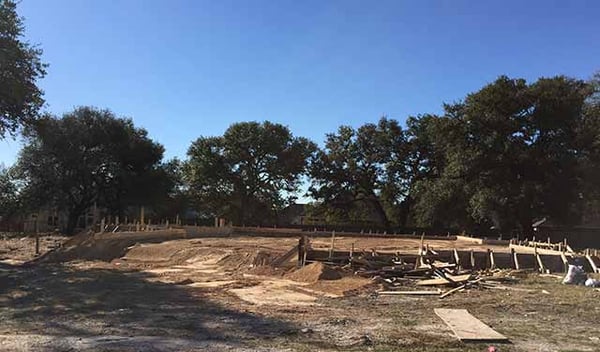
The foundation is one of the most weather-sensitive stages of building a home.
Not only does the weather need to be clear to pour concrete, but the fill inside the form boards must be completely dry first. Pouring before the form fill is dry can cause the slab to bow or settle unevenly—creating long-term structural risk.
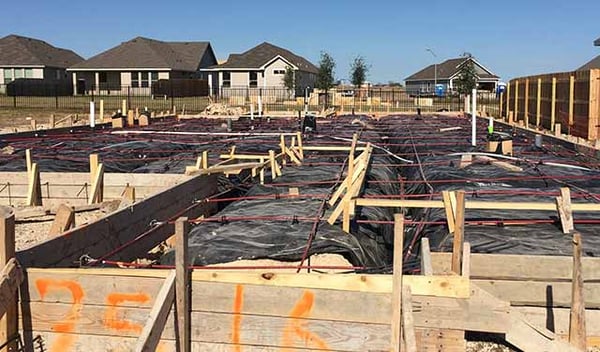
If it rains after the fill is set, plumbers must wait for the area to dry completely before walking on it. Wet fill can collapse under weight and compromise the plumbing rough-in (the pipes installed inside the slab).
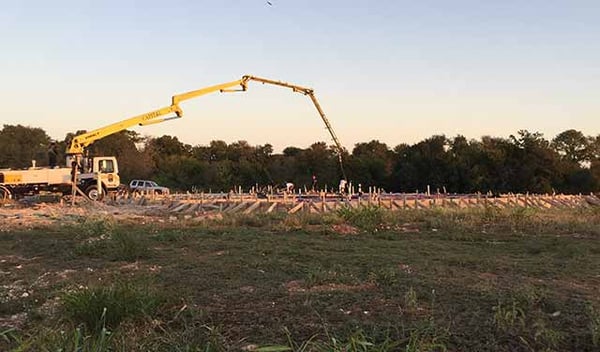
Once the plumbing rough-in is complete, any additional rain can delay the concrete pour again. Wet ground can’t properly support heavy equipment, and the foundation may not cure correctly on saturated soil.
In short: no responsible builder pours a foundation in the rain. After all, no one wants to see their beautifully designed home shifting or sinking because the slab was rushed.
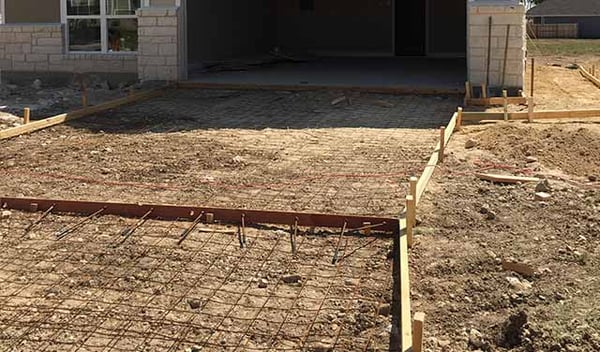
For similar reasons, driveway pours need dry conditions. Rain throws off the concrete mixture’s water balance, and pouring during wet weather can lead to cracking or structural weakness after curing.
That’s why builders typically wait until the rain clears and the ground is dry before pouring the driveway
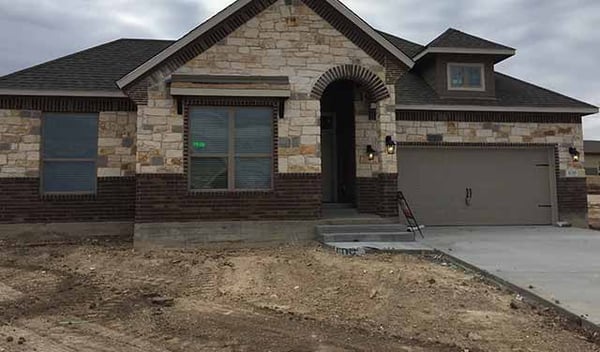
Rain can also slow the final steps that make your home feel fully finished—your yard.
Not only does rain leave the job site muddy and difficult to walk on or clear debris, but it also affects three key landscaping needs:
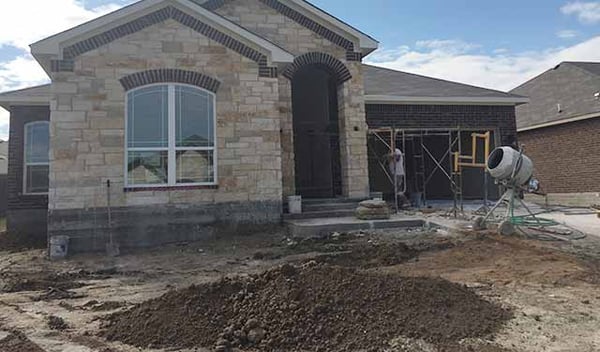
If the yard isn’t dry, it’s nearly impossible to determine correct grading. Proper grading is essential to avoid future drainage issues.
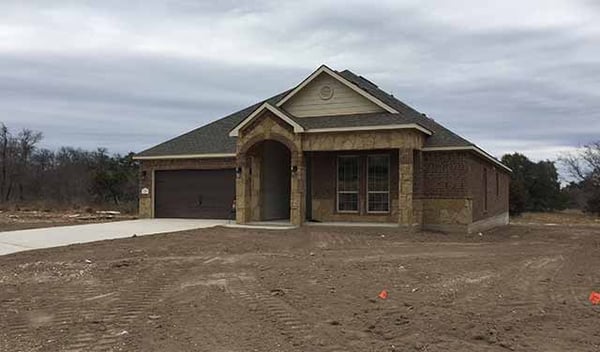
The dirt used to grade the yard has to be delivered and spread. When it rains, the yard becomes a mud pit that equipment can’t safely work in.
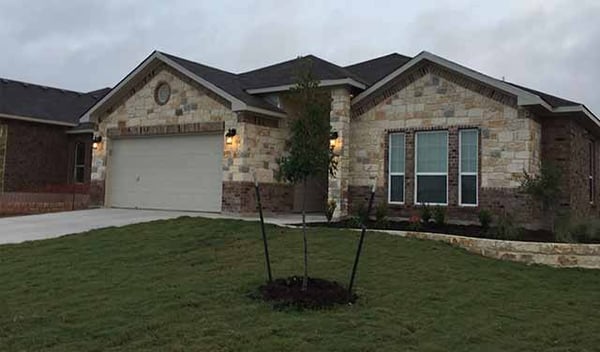
Sod is often sourced along the coast where growing conditions are ideal. If it’s raining at your homesite, chances are it may be raining on the coast too. Wet sod is heavy, difficult to transport, and harder to lay evenly. Installing sod in the rain increases safety risks and can cause brown patches, uneven lines, and footprints in your new yard.
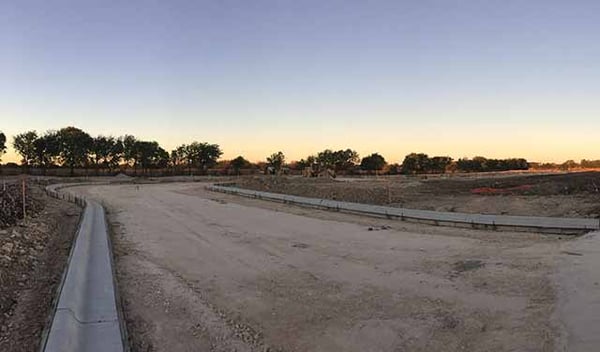
Because of the way Omega Builders plans and builds homes, most seasonal weather delays can be made up during other phases of construction. Our processes are designed to lessen the impact of rain and help our Superintendents stay aligned with projected schedules.
Our subcontractors aren’t paid until work is completed, so it’s in everyone’s best interest to keep things moving efficiently (and safely). When weather clears, crews are ready to get back on track fast.
Regardless of where you are in the home buying or building process, patience, compassion, and understanding go a long way. Rain delays can be frustrating, but they protect the quality of your home—especially during critical stages like your foundation and concrete pours.
Everyone on the Omega Builders team understands the impact rain can have. We know how important the decision to purchase (and build) a home is, and we’re prepared to face the rain construction challenges together.
If you’re still debating if a new home is right for you and your family, explore your free copy of our New Homes Guide today.
Editor's Note: This post was originally published in January 2019 and has been updated to reflect the most current information

Chief Operations Officer
Ryan has 16+ years’ experience in construction, purchasing, and operations. He was recognized as the 2016 Builder of the Year by the Temple Area Builder’s Association.

COPYRIGHT © 2017 - 2025